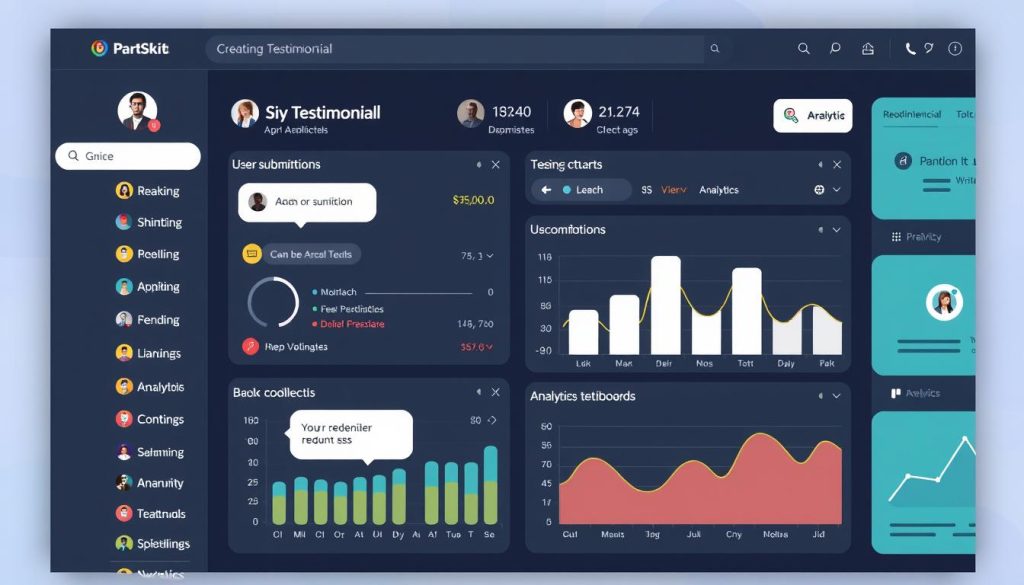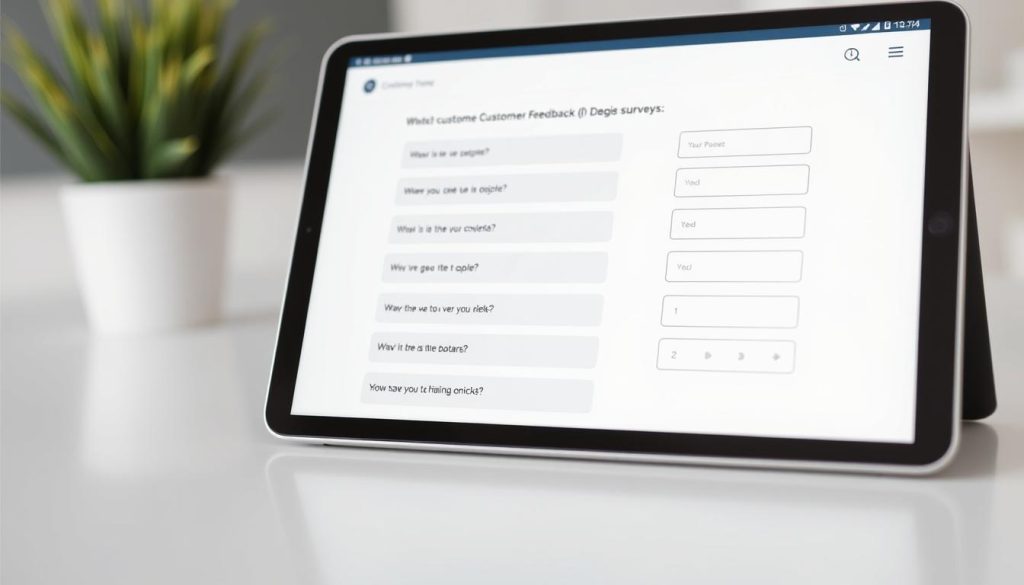In today’s competitive business landscape, building trust with potential customers is crucial for success. One effective way to establish this trust is through genuine customer feedback. By sharing real experiences from satisfied customers, businesses can create a sense of reliability and credibility.
When potential customers see positive testimonials from existing customers, it serves as powerful social proof that can influence their purchasing decisions. This guide will explore how to leverage these testimonials to enhance your brand reputation and drive business growth.
Table of Contents
Key Takeaways
- Understand the importance of testimonials as a marketing asset.
- Learn how to effectively collect and display customer feedback.
- Discover the impact of testimonials on purchasing decisions and conversion rates.
- Explore various types of testimonials and their strategic use across marketing channels.
- Gain insights into transforming customer satisfaction into business growth and brand loyalty.
The Power of Social Proof in Business
The concept of social proof is not new, but its significance in business, particularly in building credibility and trust, cannot be overstated. In a world where consumers are increasingly skeptical of traditional advertising, customer testimonials have emerged as a powerful tool for businesses to establish trust with potential customers.
What Are Client Testimonials?
Client testimonials are endorsements from satisfied customers that detail their positive experiences with a product or service. These testimonials can take various forms, including written reviews, case studies, social media posts, or videos. By sharing their experiences, customers help businesses showcase their credibility and build trust with new customers.
Why Testimonials Matter for Your Brand
Testimonials matter because they serve as third-party validation that can significantly influence consumer behavior and decision-making processes. They help overcome buyer hesitation by addressing common concerns through real customer experiences. Moreover, curated client success stories are essential components of an effective marketing strategy, enhancing a brand’s reputation and credibility.
By leveraging testimonials, businesses can create a robust marketing strategy that not only attracts new customers but also retains existing ones. The use of testimonials in business marketing highlights the importance of trust in the customer-business relationship.
How Client Testimonials Impact Purchasing Decisions

Authentic client testimonials have become a cornerstone in influencing purchasing decisions. They provide social proof from relatable sources, helping potential customers build trust in a brand.
Trust-Building Through Authentic Experiences
Client testimonials build trust by sharing authentic experiences. When potential customers read or watch testimonials, they create an emotional connection with the brand, which traditional marketing often fails to establish. Trust is a top driver of business, as highlighted by the 2022 Edelman Trust Barometer. The study showed that trust in a brand leads to customer loyalty, with 67% of people more likely to stay loyal and advocate for a brand they trust.
Key Statistics on Testimonial Effectiveness
The effectiveness of testimonials is backed by compelling statistics. Research indicates that when consumers interact with reviews, they are 58% more likely to convert and generate 62% more revenue per site visitor. Additionally, they spend 3% more per order. A study by Wyzowl found that 77% of those who watched a brand’s testimonial said it helped convince them to buy the product or service. These statistics demonstrate the measurable impact of testimonials on conversion rates and revenue generation.
- Testimonials provide social proof, influencing purchasing decisions.
- They create emotional connections, building trust with potential customers.
- Compelling statistics show a significant impact on conversion rates and revenue.
8 Types of Client Testimonials to Showcase Your Success
Understanding the diverse types of client testimonials is crucial for businesses looking to leverage customer feedback effectively. By incorporating various testimonial types into your marketing strategy, you can build trust, demonstrate value, and showcase your product or service’s impact on customers.
Quote Testimonials
Quote testimonials are concise statements from satisfied customers that highlight a company’s key benefits or features. These impactful quotes can be easily incorporated into marketing materials and websites to provide quick social proof.
Example: « Their customer service is exceptional, always available to help. » – Emily R., satisfied customer.
Social Media Testimonials
Social media testimonials leverage platforms like Facebook, Instagram, and LinkedIn to showcase authentic customer feedback in a highly shareable format. This type of testimonial benefits from the social proof inherent in social media interactions.
Example: A tweet praising a company’s product or service can be a powerful testimonial.
Video Testimonials
Video testimonials are dynamic narratives that put a face to your customer base, allowing potential customers to see and hear real people discussing their positive experiences. For creating compelling video testimonials, consider using the best video testimonial software.
Example: A customer shares their experience with a product, highlighting its benefits and how it solved their problem.

Case Studies and Success Stories
Case studies and success stories provide in-depth proof of a product’s effectiveness by documenting specific challenges, solutions, and measurable results. These detailed accounts help potential customers understand how a product or service can address their needs.
Example: « How XYZ Corporation increased sales by 25% using our product. »
Interview Testimonials
Interview testimonials use a conversational format to dive into customer stories, allowing them to share detailed experiences in a relatable way. This format can provide rich, engaging content that resonates with potential customers.
Example: An interview with a customer discussing their experience with a product or service.
Blog Post Testimonials
Blog post testimonials can be narrative-driven articles that paint a clearer picture of a company’s relationship with its clients. These can improve SEO while showcasing detailed customer experiences and product benefits.
Example: « A Day in the Life: How Our Product Helped ABC Company. »
Influencer Endorsements
Influencer testimonials involve industry leaders, celebrities, or social media personalities endorsing a product or service to their followers. This can be an effective way to build credibility with established audiences.
Example: A well-known industry expert praising a product on their social media channels.
Review Site Testimonials
Review site testimonials are professional evaluations published in reputable media outlets or industry publications. These carry significant weight due to their perceived objectivity and reach.
Example: A review of a product or service on a respected review website.
Creating a Dedicated Client Testimonial Page
Client testimonials are a powerful tool for building trust with potential customers, and a dedicated page is the perfect place to showcase them. By creating a centralized hub for client testimonials, you can effectively communicate your brand’s value proposition to potential customers and differentiate yourself from competitors.
Elements of an Effective Testimonial Page
An effective testimonial page requires strategic layout, visual hierarchy, and content organization that guides visitors toward conversion. This can be achieved by balancing different testimonial formats, such as text quotes, videos, case studies, and social media embeds. For instance, successful businesses often use a mix of these formats to cater to different learning preferences and keep the content engaging.
Navigation and Organization Strategies
To make your testimonial page user-friendly, it’s essential to implement effective navigation and organization strategies. This can include filtering options that allow potential customers to find testimonials relevant to their industry, company size, or use case. For example, ZenDesk’s testimonial page allows visitors to filter testimonials by location, company size, industry, and use case, making it easier for them to find relevant success stories.
| Feature | Description | Benefit |
|---|---|---|
| Filtering Options | Allows visitors to filter testimonials by industry, company size, or use case | Enhances user experience and relevance |
| Balanced Testimonial Formats | Mix of text quotes, videos, case studies, and social media embeds | Caters to different learning preferences and keeps content engaging |
| Clear Calls-to-Action | Guides visitors to the next step in their journey | Capitalizes on the trust built through customer stories |
5 Innovative Ways to Display Testimonials on Your Website
Enhance your website’s credibility by showcasing customer testimonials in innovative ways. Displaying testimonials effectively can significantly boost trustworthiness and conversion rates. Here are five approaches to consider.
Interactive Testimonial Galleries
Interactive testimonial galleries allow visitors to filter and sort testimonials based on relevant criteria such as industry or company size. This interactive approach helps potential customers find relevant success stories quickly.
Testimonial Sliders and Carousels
Testimonial sliders and carousels are effective for showcasing multiple client stories in a limited space. They maintain visitor engagement through dynamic content presentation, ensuring that your website remains engaging and informative.
Industry-Specific Testimonial Filters
Industry-specific testimonial filters enable potential customers to quickly find success stories relevant to their business context. This targeted approach can significantly enhance the credibility of your website.
| Method | Description | Benefit |
|---|---|---|
| Interactive Galleries | Filterable testimonials | Easy to find relevant stories |
| Testimonial Sliders | Dynamic content display | Engages visitors effectively |
| Industry Filters | Targeted testimonials | Enhances credibility |
By incorporating these innovative testimonial display methods, you can create a more engaging and trustworthy website. Strategic placement of testimonials, such as near pricing information or product features, can address objections at critical decision points, further enhancing your website’s effectiveness.
How to Request Compelling Client Testimonials

Compelling client testimonials don’t happen by chance; they require a strategic approach to requesting them. To effectively gather customer testimonials, you need to understand the optimal timing and craft effective request templates.
Timing Your Testimonial Requests
The timing of your testimonial requests can significantly impact the quality of the feedback you receive. It’s essential to request testimonials when your customers are most satisfied with your product or service, such as after a successful project completion or a positive interaction with your customer support team.
Requesting testimonials at the right moment ensures that their experiences are fresh in their minds, resulting in more detailed and sincere testimonials.
| Timing | Event | Benefit |
|---|---|---|
| After successful project completion | Positive outcome | Fresh, detailed testimonials |
| Post-interaction with customer support | Satisfied customers | Credible, sincere feedback |
| During renewal or repurchase | Long-term satisfaction | Testimonials highlighting long-term value |
Creating Effective Testimonial Request Templates
Crafting effective testimonial request templates is crucial for gathering specific, detailed customer feedback. Open-ended questions encourage customers to provide narrative-style responses that highlight their experiences with your product or service.
Consider using questions like: « Please describe a specific challenge you overcame using our product. » or « Can you describe when our customer support team went above and beyond for you? »
Automating Your Testimonial Collection Process
Streamlining the process of gathering customer testimonials through automation can revolutionize how businesses approach customer feedback.

By automating the testimonial collection process, businesses can ensure a steady stream of customer testimonials without the manual effort. This not only saves time but also enhances the quality and relevance of the testimonials.
Tools for Gathering Client Feedback
Various software tools are available for gathering client feedback, ranging from simple survey tools to comprehensive testimonial management platforms. These tools enable businesses to collect feedback at scale, ensuring that no valuable customer insight is missed.
Some of the key features to look for in testimonial collection software include customizable survey templates, automated email tracking, and integration with CRM systems.
Setting Up Automated Testimonial Workflows
To set up automated testimonial workflows, businesses should first identify key customer behavior signals such as repeat purchases or feature usage milestones. These signals can trigger testimonial requests, making the feedback more relevant and timely.
Integrating testimonial collection with existing CRM and marketing automation systems is also crucial for creating seamless workflows. This integration ensures that testimonial requests are personalized and that the feedback is used effectively across various marketing channels.
Using Surveys to Generate Quality Testimonials

By implementing strategic surveys, companies can efficiently identify customers who are likely to provide positive testimonials. Surveys help gauge customer satisfaction and pinpoint those who have had a significantly positive experience with your product or service.
Identifying Promoters with NPS Surveys
NPS surveys are crucial for identifying promoters—customers who are very likely to refer your company to others. By asking how likely customers are to recommend your product or service, you can identify those who are enthusiastic about your brand. Following up with these promoters can lead to detailed and compelling testimonials.
Capturing Satisfaction with CSAT Surveys
CSAT surveys measure customer satisfaction with specific aspects of your product or service. By understanding what satisfies your customers, you can identify areas to highlight in testimonials. Crafting survey questions that elicit detailed feedback can provide rich content for testimonials, showcasing the strengths of your product or service.
Combining NPS and CSAT surveys allows businesses to not only identify satisfied customers but also to understand the specifics of their satisfaction. This information can be used to create focused testimonials that resonate with potential customers.
Design Best Practices for Showcasing Client Testimonials
Effective design is crucial for showcasing client testimonials in a way that resonates with potential clients. A well-crafted testimonial page not only enhances credibility but also builds trust with your audience.
Visual Elements That Enhance Credibility
To boost the credibility of your testimonials, incorporate visual elements that highlight authenticity. Use high-quality images that are professional and approachable. Consistent branding is also key; stick to your brand’s color palette and typography when designing testimonial cards and quote blocks. This visual consistency helps in creating a cohesive and trustworthy presentation.
Mobile-Friendly Testimonial Displays
With the majority of users accessing websites through mobile devices, it’s crucial to ensure that your testimonial displays are mobile-friendly. This means using responsive design that adapts to different screen sizes, maintaining readability and impact across all device types. By doing so, you can ensure that your customer testimonials are effectively showcased to all potential clients, regardless of how they access your site.
By implementing these design best practices, you can create a compelling customer testimonial page that not only attracts potential buyers but also reinforces your brand’s credibility and trustworthiness. For example, aligning your testimonials with your business goals and using specific, measurable evidence can significantly enhance their impact.
5 Outstanding Client Testimonial Page Examples
The art of creating a compelling customer testimonial page is a nuanced one, with several industry leaders setting excellent precedents. By examining these examples, businesses can gain valuable insights into effective strategies for showcasing their own customer success stories.
ZenDesk: Filtering by Industry and Use Case
ZenDesk’s testimonial page stands out with its sophisticated filtering system, allowing visitors to find relevant stories by industry and use case. This personalized approach enhances the relevance of the testimonials.
Squarespace: Showcasing Real Website Examples
Squarespace uses its testimonial page to showcase actual customer websites, providing proof of concept and design inspiration. This visual approach effectively demonstrates the platform’s capabilities.
HubSpot: Combining Logos and Human Stories
HubSpot’s strategy of combining recognizable company logos with personal stories strikes a balance between brand recognition and human connection, making their testimonials more relatable.
ChowNow: Video-Focused Testimonials
ChowNow’s testimonial page focuses on video testimonials, creating an emotional engagement through authentic customer narratives.
Shopify: Crowdsourcing Success Stories
Shopify’s « Success Stories » page encourages customers to share their stories, providing a constantly refreshing source of testimonials and serving as a valuable example for other businesses.
Leveraging Testimonials Across Marketing Channels
The strategic deployment of testimonials in multiple marketing channels can significantly enhance their effectiveness. By sharing customer testimonials across various platforms, businesses can build trust and credibility with potential customers at different stages of their journey.
Incorporating Testimonials in Email Campaigns
Incorporating testimonials into email marketing campaigns can boost engagement and conversion rates. Use them in welcome sequences to establish credibility, in abandoned cart reminders to alleviate concerns, and in retention efforts to reinforce positive experiences.
Using Testimonials in Social Media Marketing
Adapting testimonials for social media platforms like Instagram and Facebook can help reach a wider audience. Consider the format requirements and audience expectations for each channel to maximize engagement.
Featuring Testimonials in Sales Materials
Featuring testimonials in sales materials such as proposals and presentations can address objections and build confidence during direct sales conversations. This helps to create a more persuasive narrative for potential customers.
| Marketing Channel | Testimonial Usage | Benefits |
|---|---|---|
| Email Campaigns | Welcome sequences, abandoned cart reminders | Boosts engagement, conversion rates |
| Social Media | Instagram, Facebook posts | Increases reach, engagement |
| Sales Materials | Proposals, presentations | Addresses objections, builds confidence |
Conclusion: Transforming Client Satisfaction Into Business Growth
By harnessing the authentic voices of satisfied clients, businesses can create a compelling narrative that drives growth. Throughout this article, we’ve explored the multifaceted role of client testimonials in building trust, overcoming objections, and shortening the sales cycle. Customer testimonials serve as powerful social proof that not only attracts new customers but also reinforces the confidence of existing ones, contributing to higher retention rates and customer lifetime value.
The foundation of great testimonials is exceptional product quality and customer service. It’s about delivering genuine value to your customers and capturing their experiences in a way that resonates with potential clients. As we’ve seen, there are various types of testimonials, from quote testimonials to video testimonials, each offering a unique way to showcase your business and product service.
Looking ahead, emerging trends in testimonial marketing include the use of video testimonials, user-generated content, and interactive testimonial experiences. To implement a comprehensive testimonial strategy, start by identifying satisfied customers and requesting their feedback. Even businesses just starting out can leverage the enthusiasm of early adopters to build credibility.
In conclusion, testimonials are a crucial element in any business marketing strategy, providing a human touch that can significantly impact growth. By focusing on delivering exceptional service and capturing the stories of your satisfied customers, you can create a robust testimonial program that drives long-term success.
FAQ
What is the purpose of showcasing customer feedback on a website?
Showcasing customer feedback on a website helps build trust and credibility with potential customers, increasing the likelihood of converting them into paying customers.
How can businesses effectively collect customer success stories?
Businesses can collect customer success stories by requesting feedback through surveys, email campaigns, or in-person interviews, and by leveraging tools that automate the testimonial collection process.
What are some best practices for displaying customer testimonials on a website?
Best practices include using visual elements that enhance credibility, making testimonial displays mobile-friendly, and organizing testimonials in a way that is easy for visitors to navigate.
Can customer testimonials be used across different marketing channels?
Yes, customer testimonials can be leveraged across various marketing channels, including email campaigns, social media marketing, and sales materials, to maximize their impact.
How can businesses ensure the authenticity of customer testimonials?
Businesses can ensure authenticity by using real customer names and stories, obtaining permission from customers before sharing their testimonials, and showcasing a variety of testimonials that demonstrate different aspects of their product or service.
What role do customer testimonials play in influencing purchasing decisions?
Customer testimonials play a significant role in influencing purchasing decisions by providing social proof, building trust, and offering insights into the experiences of other customers who have used the product or service.
How can businesses measure the effectiveness of their customer testimonial strategy?
Businesses can measure the effectiveness of their customer testimonial strategy by tracking engagement metrics, such as click-through rates and conversion rates, and by monitoring the impact on sales and customer acquisition.





